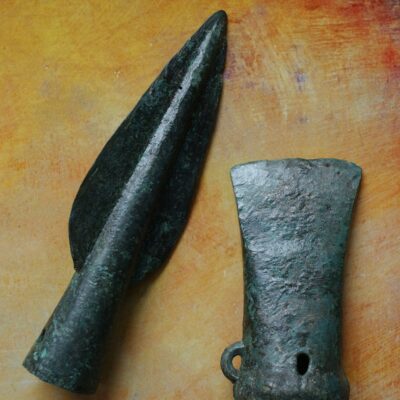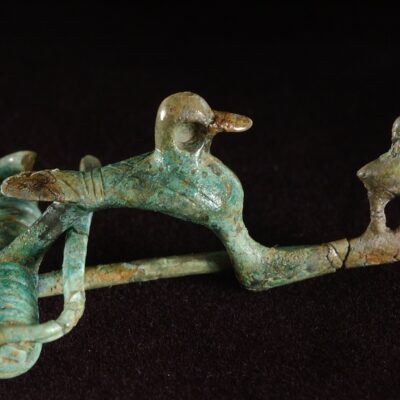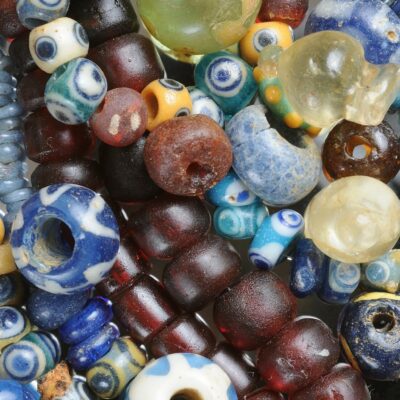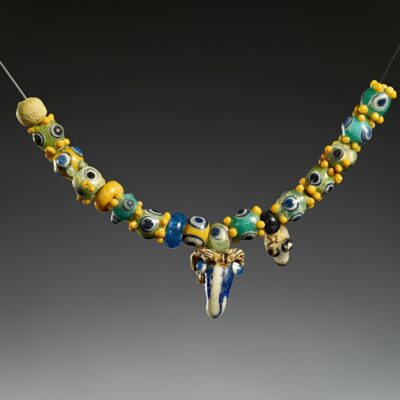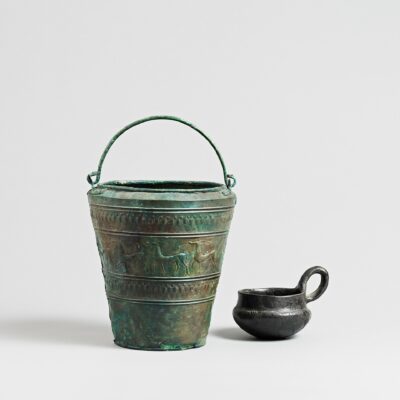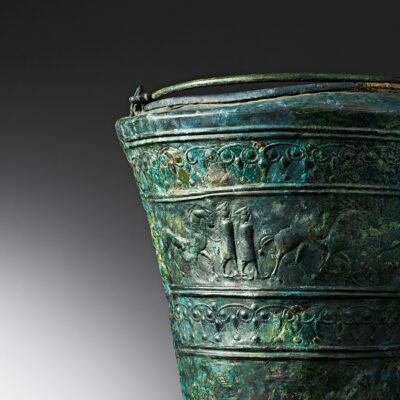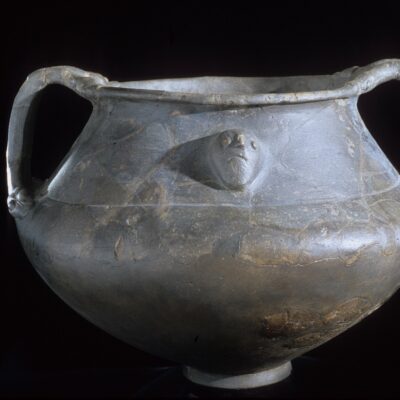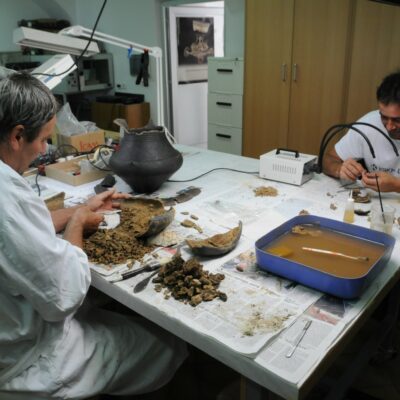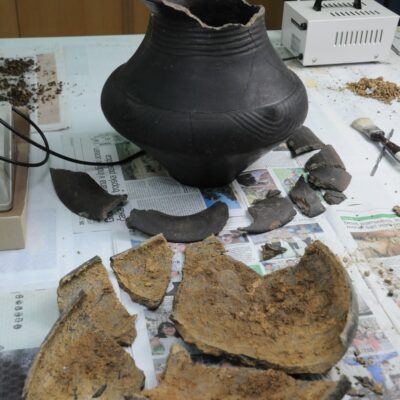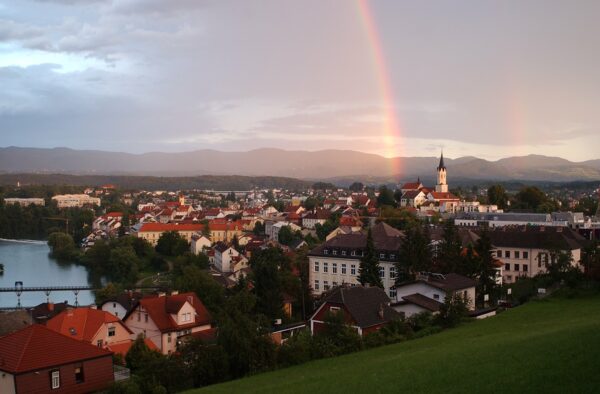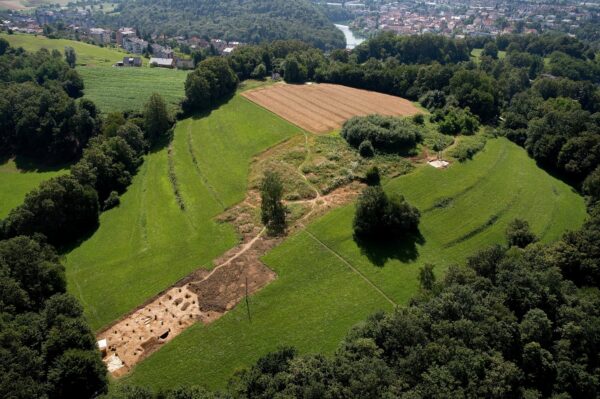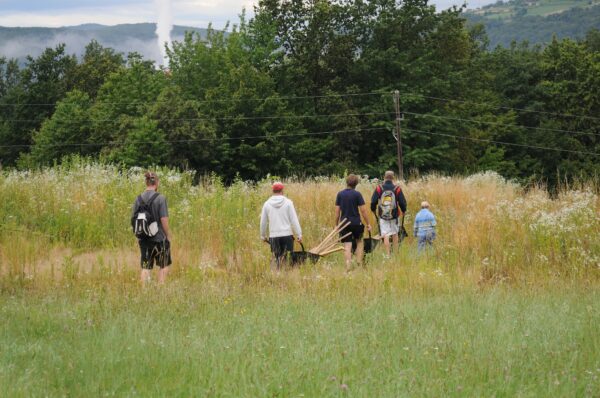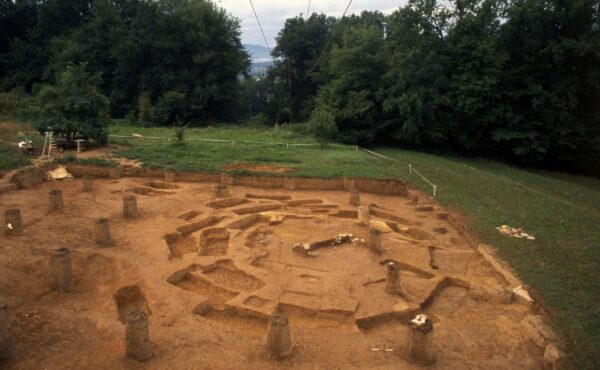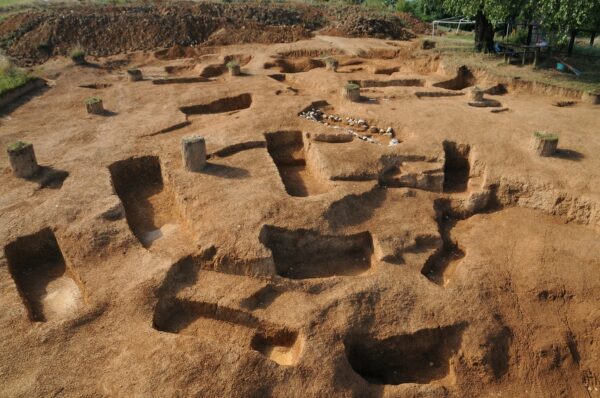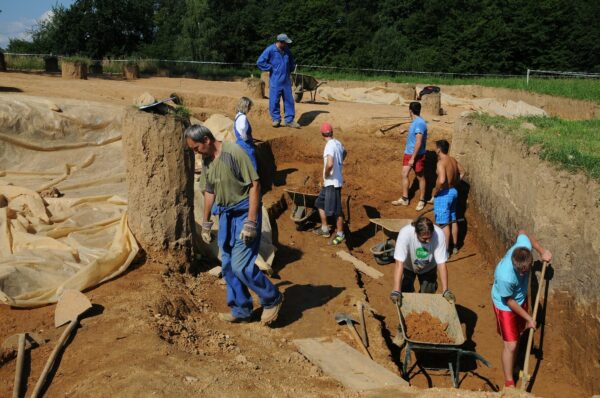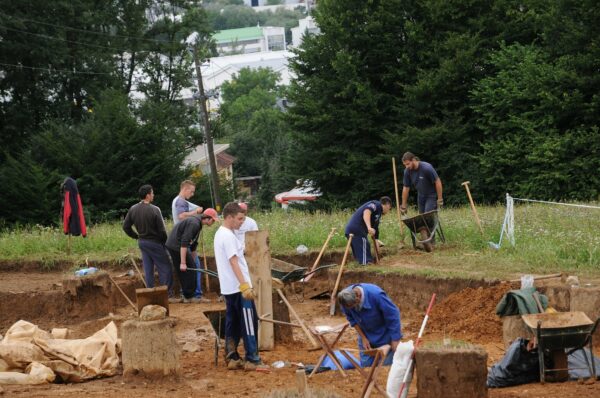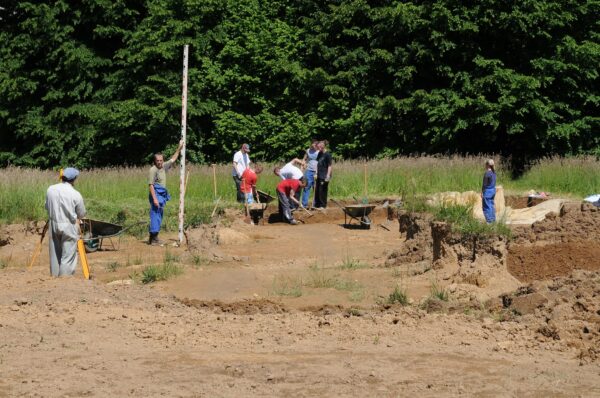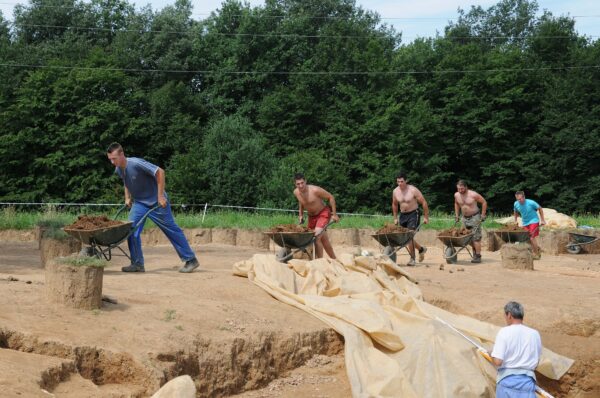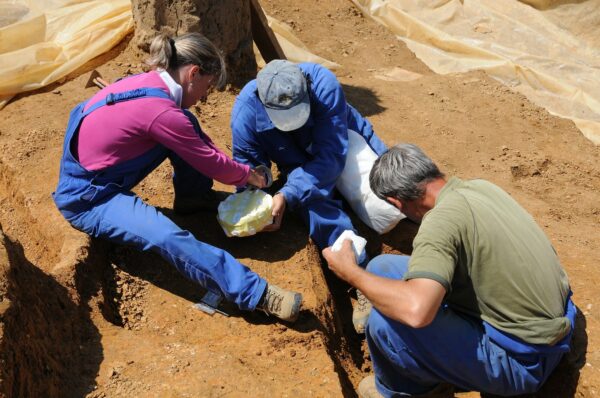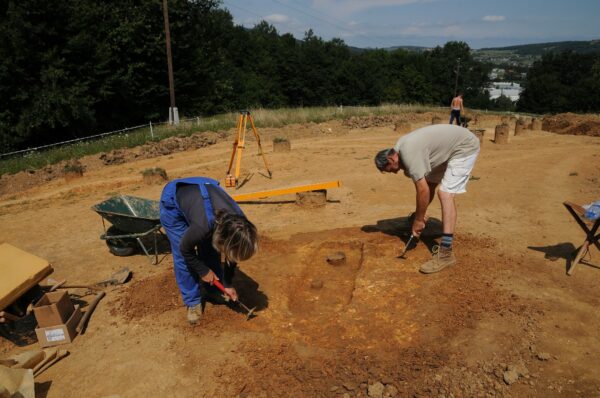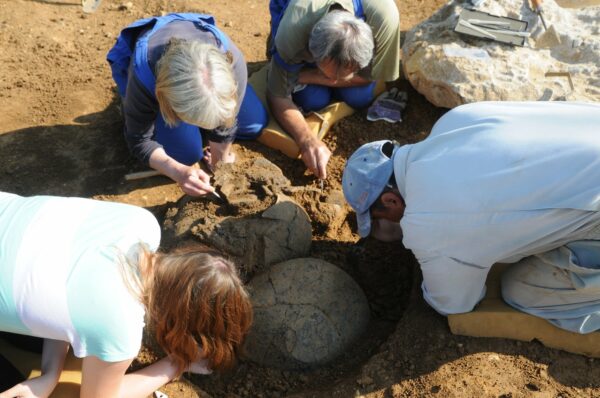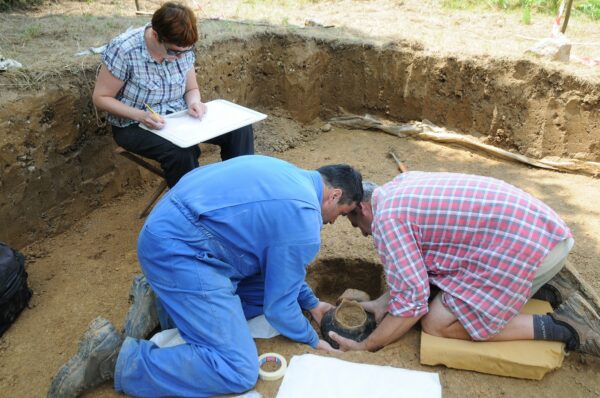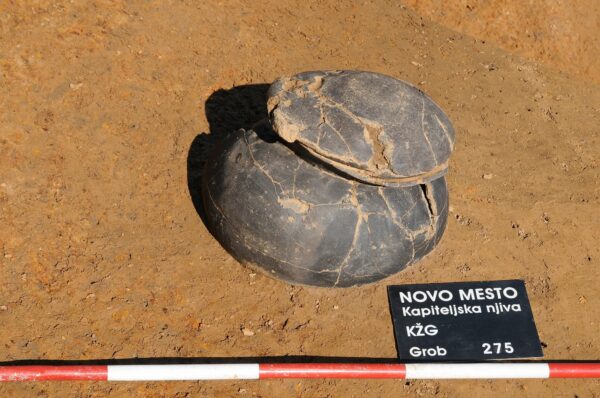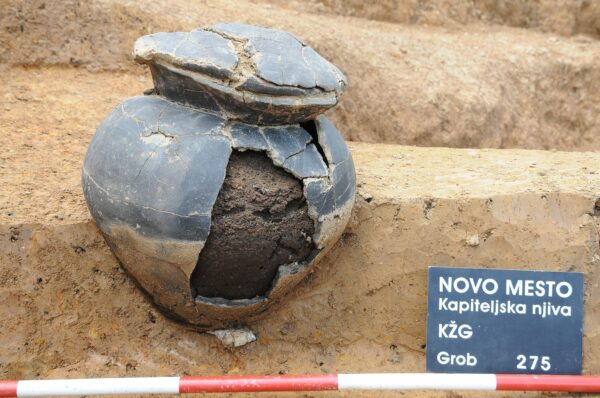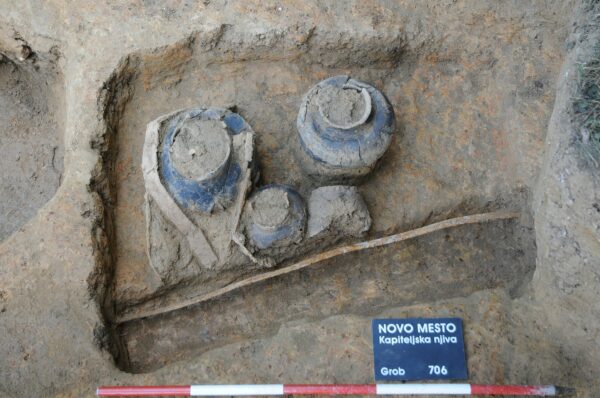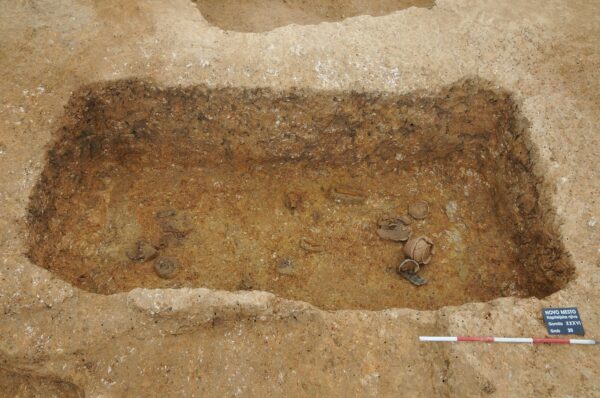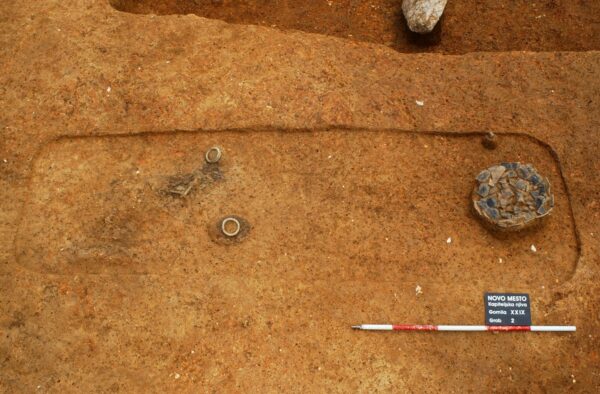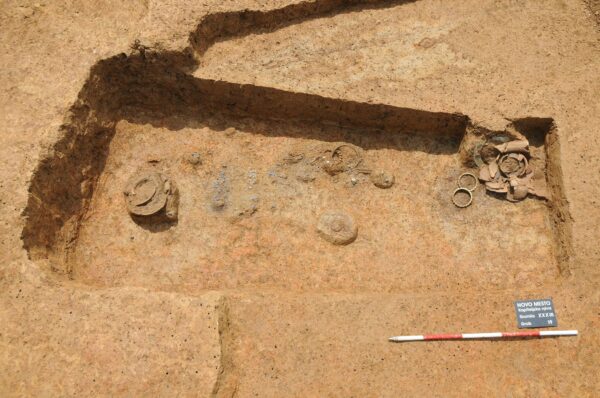Curatorial Department of Archaeology
The Department of Archaeology was established in 1958, when the first archaeologist Tone Knez started his work in the Museum of Dolenjska. This was the beginning of systematic research and archaeological material collecting in the region of Dolenjska. The results of archaeological work were published contemporarily and presented in temporary exhibitions.
Today, the Department of Archaeology employs five professionals: two archaeologists, an architect documentalist and two specialists for the restoration of archaeological artefacts. Students also are included in the working process of the museum.
As a result of collaboration between the Institute for the Protection of Cultural Heritage of Slovenia and the Museum of Dolenjska, a restoration workshop for archaeological artefacts was established in Novo mesto in the mid-1980s.
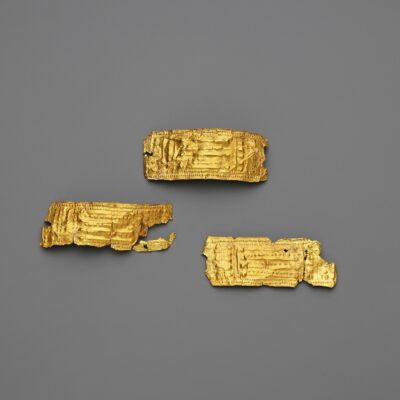
The basic mission of the Department of Archaeology is collecting, documenting and studying the archaeological heritage kept in the museum, as well as presenting it to both the public and the professionals.
While most of the exhibits and artefacts that are stored in the depots were restored in our own workshop, some of the items were restored in other Slovenian restoration workshops. Ever since the times of Tone Knez, the Museum of Dolenjska has been collaborating with the restoration experts in the Romano-Germanic Central Museum in Mainz. The professional cooperation with the Mainz restoration workshop includes exchanges of restoration specialists.
The Department of Archaeology keeps archaeological material from the Neolithic to the Early Middle Ages. The majority of the finds, however, are dated in the Late Bronze Age, Early Iron Age and Late Iron Age. In addition to the finds, the Department of Archaeology keeps a collection of archaeological posters.
Our material is presented in exhibition catalogues and in the Carniola Archaeologica periodical. Our collections are constantly growing due to various excavations and other projects in the territory of Dolenjska, which produce relatively large quantities of archaeological artefacts.
Archaeological Restoration Workshop
The majority of the archaeological material displayed in the new permanent exhibition or stored in the depots was restored in the museum’s own workshop for archaeological artefacts, which has been operating since the mid-1980s in association with the Novo mesto Regional Unit of the Institute for the Protection of Cultural Heritage of Slovenia. Due to the very large quantities of material, it was necessary to start a successful long-standing cooperation with other restoration workshops in Slovenia. In particular, we must mention our collaboration with experts from the restoration workshop of the Romano-Germanic Central Museum in Mainz, the beginnings of which reach back to the time of Tone Knez.
All restoration work in Mainz is performed free of charge. Copies of the most significant archaeological finds from Dolenjska remain in their museum, where copies of the most important archaeological artefacts from all over the world are displayed. We also have an established study exchange of restoration experts with the Mainz workshop.
Our restoration workshop for archaeological material is located on the premises of the Institute for the Protection of Cultural Heritage of Slovenia in the Grm mansion. There are two restoration specialists; one for metal, glass, and amber artefacts and one for pottery.
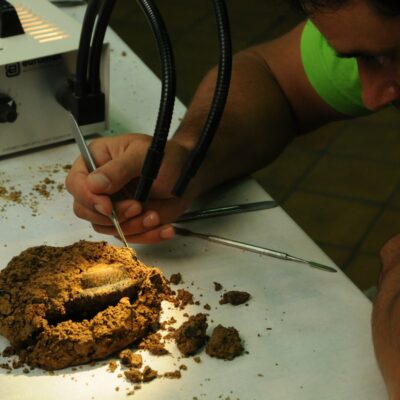
Field Work
The systematic archaeological research in Kapiteljska njiva, performed by our entire archaeological team, has been conducted every year since 1986, preceded by minor investigations in 1983 and 1985. The results are outstanding, illuminating not only the archaeological image of Dolenjska and Slovenia, but that of the entire Europe.
In addition to the Kapiteljska njiva excavations, minor field inspections in different locations of Dolenjska are conducted every year. The museum participates in rescue excavations; especially prominent among those were the rescue excavations prior to the construction of the highway.
Novo mesto – Kapiteljska njiva
Kapiteljska njiva, the largest prehistoric cemetery in Novo mesto, lies on a relatively flat top of the Marof hill, between the medieval core of the modern Novo mesto and the Bršljin district. It has revealed more than 300 Late Bronze Age (10th – 8th century BC) cremation burials in urns, more than 1000 Early Iron Age (8th – 4th century BC) inhumation burials in 45 tumuli, and more than 720 Late Iron Age (4th – 1st century BC) cremation burials.
The excavations at Kapiteljska njiva have been in progress ever since the mid-1980s. They have resulted in a series of new findings illuminating our knowledge of life in the first millennium BC, and have produced a large number of finds. The figurally decorated situlae belong among the finest such artefacts in Europe. In addition to the four monuments of situla art, we should mention three situlae with no decoration and five metal vessels from the Early Iron Age, four bronze helmets, pottery vessels imported from Greece, many pieces of amber from the Baltic regions, which arrived in the Novo mesto area via the Amber Route, artefacts made of gold, and a multitude of multi-coloured glass beads of locally produced necklaces.

